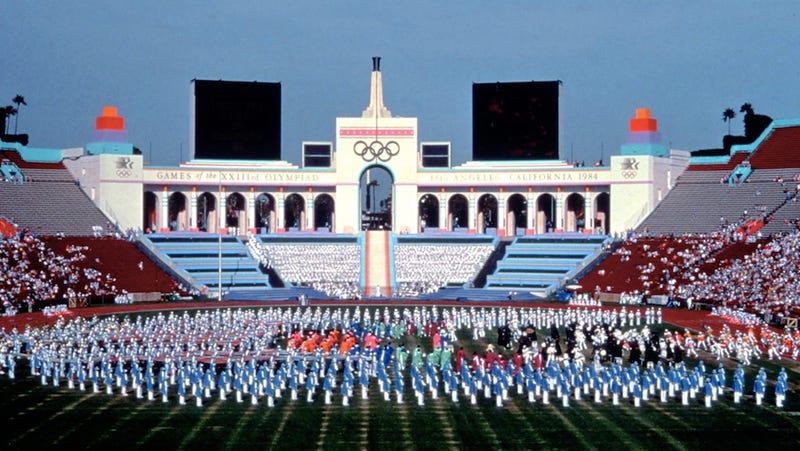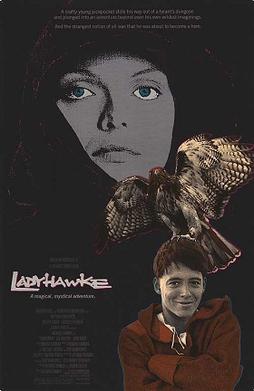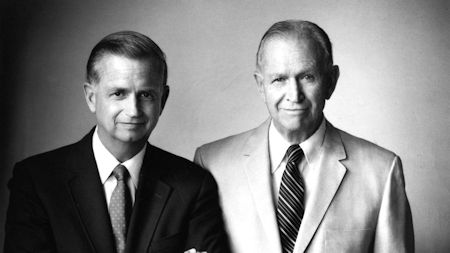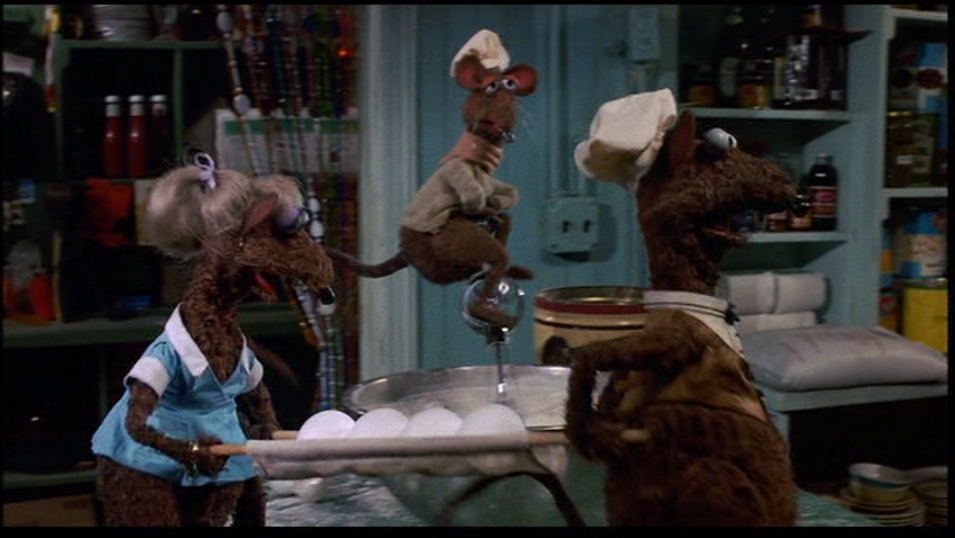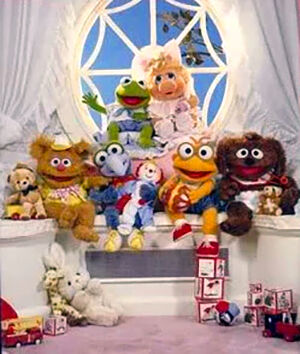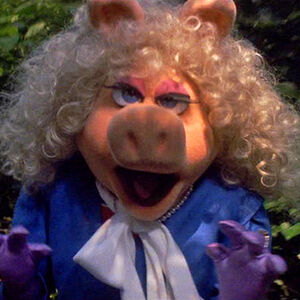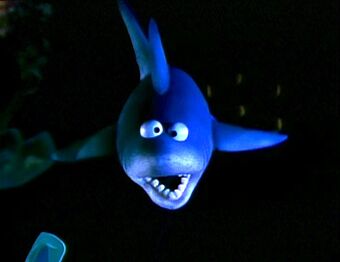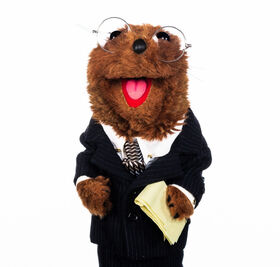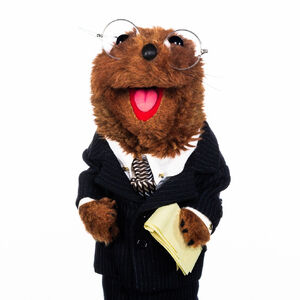Chapter 13: Next Steps and The Next Generation (Cont’d)
Excerpt from Jim Henson: Storyteller, an authorized biography by Jay O’Brian.
1983 had been a new and exciting time for Jim Henson after the dour, change-resistant Card Walker retired, giving him more and more of the creative freedom he sought. Between Disney Studios (for which he was now, officially, Studio President), the Disney Channel, WED’s creative efforts, and the new Hyperion label, he was constantly busy, ever moving from one project to the next. Almost all of the projects that he or his crew had touched had done well in 1983. The success of Never Cry Wolf was validating the Hyperion label. The Imagination Pavilion was the most popular attraction in EPCOT, even counting the novelty-driven interest in Horizons, which had opened that October. Waggle Rock was a smash hit. The Disney Channel was holding its own in the world of premium television despite failing to come close to meeting Miller’s wild expectations. New VHS and Betamax sales were bringing in income, a nice affirmation for his and Ron’s push for increased home video sales. Sure, the videogame market had crashed, but, all in all, it had been a promising year. 1984 promised to be even better.
The first quarter of 1984, however, was a hectic time for Jim Henson and Disney. It would only get more hectic as the year progressed. Despite the initial success of the Imagination and Horizons Pavilions, EPCOT attendance had flattened out and started to dip in 1984. Furthermore, despite Henson’s apparent creative freedom, the Executive Committee, still dominated by Walker and Tatum, still held him back. After his trip to Japan, Henson pushed hard to start releasing Japanese anime features on the Fantasia Films label, but had been rebuffed by Walker. “No American adult is going to watch cartoons,” Walker insisted, adding, “particularly not Jap cartoons[1].” And on the subject of “Fantasia”, Jim also pursued, without success, the resurrection of the planned Fantasia sequel Musicana.
Other disappointments included rejected distribution deals. A potential distribution deal for Monty Python’s the Meaning of Life got killed by the committee the second the “Every Sperm is Sacred” song first aired at the screening, even though the assembled employees openly cheered through the “Crimson Principle Assurance” sketch, with its literal take on corporate piracy. Also rejected was the adult animated feature Liquid Sky, whose controversial subject matter of drugs, same-sex relationships, and gender-fluidity[2] made it a non-starter with the Committee, creative liberties offered by the Fantasia and Hyperion labels notwithstanding. Henson also killed a few distribution projects himself. Despite their promising premises, the fantasy/sci-fi blend Krull and the Graham Chapman helmed absurdist comedy Yellowbeard were just plain bad movies.
But he did score some notable successes. He finally realized his dream to produce a work based on Maurice Sendak’s Where the Wild Things Are, which he put into pre-production at Disney Animation despite some reservations from the more conservative executives, who feared that it “promoted delinquency”. He greenlit The Ghost Busters and Back to the Future for Fantasia Films at the advice of Bernie Brillstein[3] and started airing episodes of the Gerry Anderson Terrahawks series[4] on the Disney Channel, which featured innovative mix of marionettes and animatronics. Further badgered by Brillstein, who was obsessed with the script, Jim convinced Ron Miller and Tom Wilhite to move forward at Hyperion with the Hollywood-based drama Edward Ford after Brillstein and Diana Birkenfield promised to “tone down the sex”. Finally, and perhaps closest to his heart, he initiated a new musical production through Henson Associates and Fantasia Films, in collaboration with Lucasfilm, that would combine Brian Froud inspired “Creature” animatronics with live actors. It was tentatively titled The Labyrinth.
1984 would also be a challenging time in Jim’s personal life. Jim had long had an eye for young women. While living in London without Jane in the late ‘70s he’d discretely “gone out” with other women, including with some of his female employees[5]. Jane had figured this out. When he first moved to Los Angeles in 1980, at first Jane had moved in with him. But the estrangement between them continued, caused partly by his long working hours and frequent travel, and partly from the “elephant in the room”. This was exacerbated by the continued estrangement of Jane from the very company she had co-founded, Henson Associates, as she continued to play the housewife. By the fall of 1983, Jane had returned to New York with John and Heather. By the spring of 1984, following an ill-fated attempt to restore the relationship that Christmas, the two agreed to formally separate[6].
“Dad made every attempt to stay involved with us,” daughter Heather, 12 at the time, recalled. “Despite how busy he was, he still found the time to include all five of us [children] in his life.”
Still, it was hard on the kids. “Mom and Dad had always just been together,” remembered son John, wistfully. “Imagining the two of them apart was…unimaginable.”
Jim Henson suddenly found himself a virtual bachelor in the City of Angels, a trait he soon shared with Disney CEO Ron Miller, who had recently separated from his wife Diane Disney Miller[7]. The two new quasi-bachelors soon began to head out on the town together, frequenting clubs and clubhouses, or racing their sports cars down the Pacific Coast Highway, collecting speeding tickets. They were seen on occasion with young, often famous women, though Miller denied any affairs were happening.
At one point, Jim suggested that they call up George Lucas, who’d divorced his wife Marcia the prior year and remained bitter and depressed about it. Soon three sports cars were racing down the PCH in what George started calling “American Graffiti 3: The Midlife Crisis”. The three-way friendship grew to the point that Jim soon dubbed them the “Three Mouseketeers”. It was quickly agreed that charming-but-shy Ron Miller was Mickey, sweet and lanky Jim was Goofy, and the moody, choleric George Lucas was Donald.
Jim bought them all custom musketeer-inspired leather jackets with their respective character and matching electric blue with silver fleur-de-lis T-top Ferraris[8].
For Jane, meanwhile, life resumed in New York with occasional visits to LA. While visiting, she continued her friendship with Dianne Disney Miller, the two bonding closer than ever over their spectacularly similar lives, having both been the wives of ambitious entertainment executives and having both largely raised their several children personally, despite being wealthy enough to hire a squad of nannies. When they weren’t commiserating over their husbands and families, they argued over politics, something that Jane found very refreshing after years of having her angers and frustrations ignored by her conflict-adverse husband.
And yet as turbulent as things had been for everyone, they would soon get spectacularly more chaotic and stressful for all.
[2] Henson was, from what I understand, rather ahead of his time on LGBTQ+ issues, even pitching a project in the mid ‘60s called Moki about an androgynous man being mistaken for a female super model. I understand it was intended to be sympathetic, not exploitative, but I have never seen the pitch and can’t confirm.
[3] Dumb luck for Disney! Bernie represented Dan Ackroyd and many other SNL players and was a chief driving force on Ghostbusters in our timeline. The Bobs brought Back to the Future to Disney in our timeline too, but were rejected because of the incest subtext.
[4] Hat-tip to @tornadobusdriver.
[5] This is recounted in Jim Henson: The Biography, by Brian J. Jones.
[6] As also happened between them in our timeline.
[7] Which also happened in our timeline; an affair is rumored to be involved.
[8] Jim Henson was almost ludicrously generous with his friends. Gifting a sport or luxury car was par for the course. He surprised the retiring David Lazer with a black, limited-release Mercedes in this timeline and ours.
Excerpt from Jim Henson: Storyteller, an authorized biography by Jay O’Brian.
1983 had been a new and exciting time for Jim Henson after the dour, change-resistant Card Walker retired, giving him more and more of the creative freedom he sought. Between Disney Studios (for which he was now, officially, Studio President), the Disney Channel, WED’s creative efforts, and the new Hyperion label, he was constantly busy, ever moving from one project to the next. Almost all of the projects that he or his crew had touched had done well in 1983. The success of Never Cry Wolf was validating the Hyperion label. The Imagination Pavilion was the most popular attraction in EPCOT, even counting the novelty-driven interest in Horizons, which had opened that October. Waggle Rock was a smash hit. The Disney Channel was holding its own in the world of premium television despite failing to come close to meeting Miller’s wild expectations. New VHS and Betamax sales were bringing in income, a nice affirmation for his and Ron’s push for increased home video sales. Sure, the videogame market had crashed, but, all in all, it had been a promising year. 1984 promised to be even better.
The first quarter of 1984, however, was a hectic time for Jim Henson and Disney. It would only get more hectic as the year progressed. Despite the initial success of the Imagination and Horizons Pavilions, EPCOT attendance had flattened out and started to dip in 1984. Furthermore, despite Henson’s apparent creative freedom, the Executive Committee, still dominated by Walker and Tatum, still held him back. After his trip to Japan, Henson pushed hard to start releasing Japanese anime features on the Fantasia Films label, but had been rebuffed by Walker. “No American adult is going to watch cartoons,” Walker insisted, adding, “particularly not Jap cartoons[1].” And on the subject of “Fantasia”, Jim also pursued, without success, the resurrection of the planned Fantasia sequel Musicana.
Other disappointments included rejected distribution deals. A potential distribution deal for Monty Python’s the Meaning of Life got killed by the committee the second the “Every Sperm is Sacred” song first aired at the screening, even though the assembled employees openly cheered through the “Crimson Principle Assurance” sketch, with its literal take on corporate piracy. Also rejected was the adult animated feature Liquid Sky, whose controversial subject matter of drugs, same-sex relationships, and gender-fluidity[2] made it a non-starter with the Committee, creative liberties offered by the Fantasia and Hyperion labels notwithstanding. Henson also killed a few distribution projects himself. Despite their promising premises, the fantasy/sci-fi blend Krull and the Graham Chapman helmed absurdist comedy Yellowbeard were just plain bad movies.
But he did score some notable successes. He finally realized his dream to produce a work based on Maurice Sendak’s Where the Wild Things Are, which he put into pre-production at Disney Animation despite some reservations from the more conservative executives, who feared that it “promoted delinquency”. He greenlit The Ghost Busters and Back to the Future for Fantasia Films at the advice of Bernie Brillstein[3] and started airing episodes of the Gerry Anderson Terrahawks series[4] on the Disney Channel, which featured innovative mix of marionettes and animatronics. Further badgered by Brillstein, who was obsessed with the script, Jim convinced Ron Miller and Tom Wilhite to move forward at Hyperion with the Hollywood-based drama Edward Ford after Brillstein and Diana Birkenfield promised to “tone down the sex”. Finally, and perhaps closest to his heart, he initiated a new musical production through Henson Associates and Fantasia Films, in collaboration with Lucasfilm, that would combine Brian Froud inspired “Creature” animatronics with live actors. It was tentatively titled The Labyrinth.
1984 would also be a challenging time in Jim’s personal life. Jim had long had an eye for young women. While living in London without Jane in the late ‘70s he’d discretely “gone out” with other women, including with some of his female employees[5]. Jane had figured this out. When he first moved to Los Angeles in 1980, at first Jane had moved in with him. But the estrangement between them continued, caused partly by his long working hours and frequent travel, and partly from the “elephant in the room”. This was exacerbated by the continued estrangement of Jane from the very company she had co-founded, Henson Associates, as she continued to play the housewife. By the fall of 1983, Jane had returned to New York with John and Heather. By the spring of 1984, following an ill-fated attempt to restore the relationship that Christmas, the two agreed to formally separate[6].
“Dad made every attempt to stay involved with us,” daughter Heather, 12 at the time, recalled. “Despite how busy he was, he still found the time to include all five of us [children] in his life.”
Still, it was hard on the kids. “Mom and Dad had always just been together,” remembered son John, wistfully. “Imagining the two of them apart was…unimaginable.”
Jim Henson suddenly found himself a virtual bachelor in the City of Angels, a trait he soon shared with Disney CEO Ron Miller, who had recently separated from his wife Diane Disney Miller[7]. The two new quasi-bachelors soon began to head out on the town together, frequenting clubs and clubhouses, or racing their sports cars down the Pacific Coast Highway, collecting speeding tickets. They were seen on occasion with young, often famous women, though Miller denied any affairs were happening.
At one point, Jim suggested that they call up George Lucas, who’d divorced his wife Marcia the prior year and remained bitter and depressed about it. Soon three sports cars were racing down the PCH in what George started calling “American Graffiti 3: The Midlife Crisis”. The three-way friendship grew to the point that Jim soon dubbed them the “Three Mouseketeers”. It was quickly agreed that charming-but-shy Ron Miller was Mickey, sweet and lanky Jim was Goofy, and the moody, choleric George Lucas was Donald.
Jim bought them all custom musketeer-inspired leather jackets with their respective character and matching electric blue with silver fleur-de-lis T-top Ferraris[8].
For Jane, meanwhile, life resumed in New York with occasional visits to LA. While visiting, she continued her friendship with Dianne Disney Miller, the two bonding closer than ever over their spectacularly similar lives, having both been the wives of ambitious entertainment executives and having both largely raised their several children personally, despite being wealthy enough to hire a squad of nannies. When they weren’t commiserating over their husbands and families, they argued over politics, something that Jane found very refreshing after years of having her angers and frustrations ignored by her conflict-adverse husband.
And yet as turbulent as things had been for everyone, they would soon get spectacularly more chaotic and stressful for all.
[1] I have no idea if Walker was truly racist against Japanese people or not, but as Marty Sklar relates, serving in the WWII Pacific Theater, Walker’s ship the USS Bunker Hill was struck by Kamikaze attacks off of Okinawa and many of his friends and shipmates died. Sklar relates that Walker’s wartime experiences would color his interactions with the Japanese while negotiating Disneyland Tokyo and nearly sunk the deal. I assume he would use the casual slur popularized during the war either way. If I’m wrong, please correct me and I’ll edit.[2] Henson was, from what I understand, rather ahead of his time on LGBTQ+ issues, even pitching a project in the mid ‘60s called Moki about an androgynous man being mistaken for a female super model. I understand it was intended to be sympathetic, not exploitative, but I have never seen the pitch and can’t confirm.
[3] Dumb luck for Disney! Bernie represented Dan Ackroyd and many other SNL players and was a chief driving force on Ghostbusters in our timeline. The Bobs brought Back to the Future to Disney in our timeline too, but were rejected because of the incest subtext.
[4] Hat-tip to @tornadobusdriver.
[5] This is recounted in Jim Henson: The Biography, by Brian J. Jones.
[6] As also happened between them in our timeline.
[7] Which also happened in our timeline; an affair is rumored to be involved.
[8] Jim Henson was almost ludicrously generous with his friends. Gifting a sport or luxury car was par for the course. He surprised the retiring David Lazer with a black, limited-release Mercedes in this timeline and ours.






